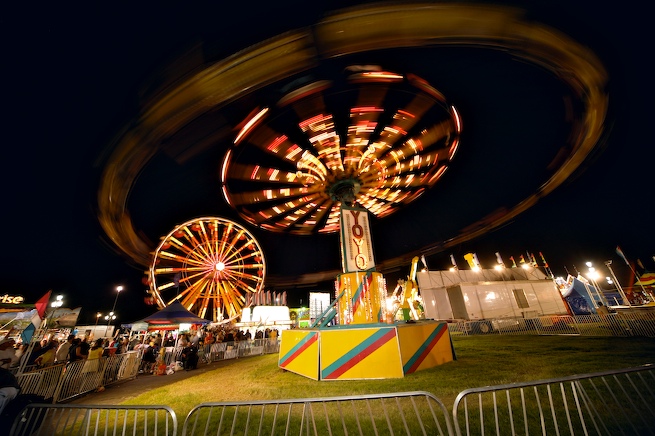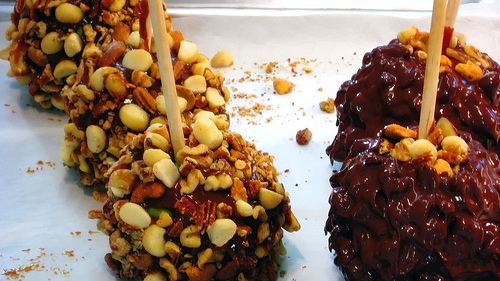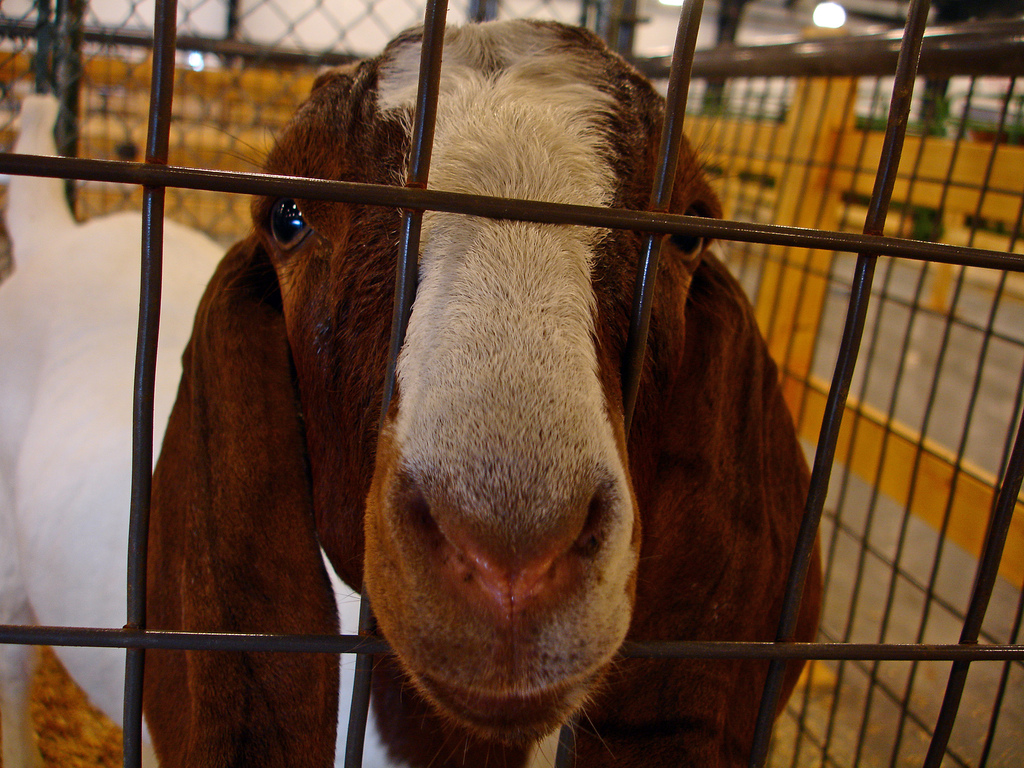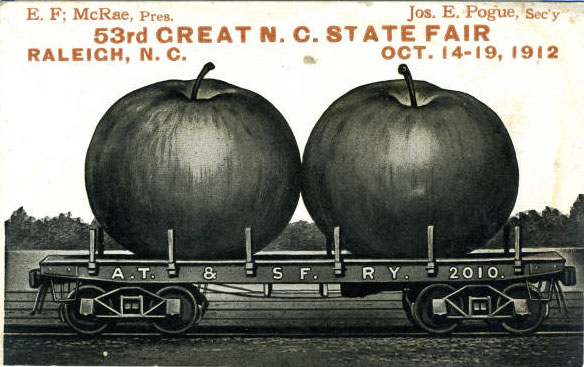In the years before the Civil War, North Carolina’s farmers faced many problems. Many were illiterate, and an even larger number were just barely able to read and write. Farmers relied on oral tradition to determine when to plant or harvest crops or how to care for livestock, and constant cultivation robbed the soil of its fertility. Many planters used what we would consider today poor agricultural practices. Only a handful of wealthy planters experimented with "scientific" methods of farming. And practically no purebred animals existed within the state’s cattle and swine herds, which sought foods in unfenced forests and fields. This was a period before there were governmental agencies to help improve the state’s farms, and few agricultural journals existed, but some North Carolinians believed farming practices needed improvement.
In 1852 agricultural journal editor Dr. John F. Tompkins decided to try to improve agriculture in North Carolina. He organized a Raleigh meeting of the state’s leading advocates of agricultural reform. At the meeting, they reestablished the North Carolina State Agricultural Society, which had first formed in 1818 but later faltered. The group decided that the best way to encourage North Carolina farmers to adopt scientific methods of farming was through an annual State Fair. The fair, they hoped, would allow the society to demonstrate the best farming practices in the state to thousands of farmers, as well as provide an opportunity to teach better farming methods.
To finance the fair, the society charged its members dues and convinced the North Carolina legislature to give it fifteen hundred dollars each year to help with the fair’s expenses. The City of Raleigh helped the society obtain fairgrounds, located east of the Capitol, and by October 1853, the society had constructed several buildings to hold agricultural exhibits, as well as a racetrack.
Thousands of North Carolina farmers came to the first State Fair, which awarded a grand total of $524 in premiums, or prizes, for the best exhibits of crops, livestock, agricultural machinery, and homemade household goods. At the society’s nightly meetings, some of the state’s best farmers and planters explained better farming methods to fair visitors. Visitors also enjoyed government-building tours in Raleigh, as well as a variety of social activities. A huge success, the fair grew rapidly.
The state government, local newspapers, and agricultural journals urged North Carolina farm families to take advantage of the fair in order to learn more about scientific agriculture and to meet people from other parts of the state. Railroads provided special rates and trains for passengers during fair week and allowed farmers to ship exhibits to the fair at reduced prices. Citizens of Raleigh, pleased to offer their goods and services to thousands of fair visitors, created more and more events to entertain them during fair week. The Agricultural Society held events such as horse races, sporting contests, shooting contests, and band concerts to encourage people to attend. By 1860 the Agricultural Society had succeeded in creating something rare—a North Carolina social institution that helped to teach the state’s citizens how to become better farmers.
The Civil War brought the State Fair to an end. North Carolina, now a Confederate state, used the fairgrounds for the instruction of volunteer troops. The state later used the fair’s exhibit halls as a Confederate hospital. The Agricultural Society paid a high price for the use of its fairgrounds and buildings by Confederate North Carolina, because victorious Union troops set fire to the structures, completely destroying some buildings and badly damaging others.
Four years after the end of the Civil War, the former leaders revived the North Carolina State Agricultural Society. Thomas Ruffin, a noted planter and judge, led the effort to revive the society, which elected as its president Kemp P. Battle. To prepare for a fair in 1869, the society used membership fees and the annual fifteen-hundred-dollar subsidy, which the state resumed paying. The society set about repairing, and sometimes improving, the fairgrounds. It enlarged the grounds, extended the racetrack to a half-mile length, and replaced and repaired burned buildings. The fair opened in October 1869 to an enthusiastic reception by both the public and the press, and it soon outgrew its original site.
In 1873, under Thomas M. Holt’s leadership, the society moved the fair to a new, larger site west of the Capitol and next to the North Carolina Railroad, across Hillsborough Street from the present-day North Carolina State University campus. The society constructed new exhibit halls, a racetrack with a three-story grandstand, two hundred stalls for horses and cattle, and seventy-five pens for sheep and swine. The site remained the fair’s home until 1925, when, after a two-year break, the fair moved to its present location approximately two miles to the west.
Between 1873 and 1925, the fair underwent many changes, but the Agricultural Society stuck to its basic concept of using the fair to educate North Carolina farmers about better farming practices. The society continued to award premiums for the best crops, livestock, agricultural implements, and household items. It also used exhibits from the North Carolina Department of Agriculture, created in 1877, and the North Carolina College of Agriculture and Mechanic Arts (now North Carolina State University), established in 1887. However, the society stopped holding nightly meetings where members read papers on scientific agriculture.
The fair provided the state’s leading agriculturalists the opportunity to display to the average farmer their purebred livestock and superior crops produced by scientific methods. It gave space to agricultural implement dealers, who introduced North Carolina farmers to improved horse-drawn plows, cultivators, harrows, and harvesting equipment, and, after World War I, to motorized farm machinery. The fair helped to educate thousands of the state’s farmers about the value of using the methods of scientific agriculture to make improvements in sanitation, personal hygiene, and diet. One of the most significant changes at the fair between 1873 and 1925 was the development of the modern midway, with its shows and attractions, rides, games of skill and chance, and food concessions. In addition to the carnival on the midway, the fair offered North Carolinians a circus at the grandstand. By 1925 grandstand attractions included musical revues, jugglers and acrobats, trained animals, human cannonballs, motorcycle daredevils, and horse and automobile races. The fair had become part educational institution, part commercial festival, and part entertainment, and North Carolinians loved it. It was also becoming very expensive to operate.
In 1925 the Agricultural Society went bankrupt, and for two years there was no fair. Then, in 1928, the State of North Carolina made the fair a state agency under the control of the Department of Agriculture and reopened the fair at its current home. In 1937 the State Fair became a division of the Department of Agriculture. Dr. J. Sibley Dorton became the first manager of the fair and remained in that position until his death in 1961. His vision created the modern fair. He wanted a place that could serve North Carolinians year-round, and the official opening of Dorton Arena in 1952 began to give the fair the facilities necessary to reach that goal.
In 1964 James “Jim” Graham became commissioner of agriculture, a position he held until he retired in 2001. Four talented and dedicated fair managers served under Commissioner Graham, working with him to develop the fairground facilities to make possible the year-round fair of Dorton’s dreams.
Today, the fairgrounds hum with activity the entire year. Still, each October the ten-day-long exposition, carnival, and celebration of our agricultural heritage that we know as the North Carolina State Fair is attended by more than 700,000 people. And it remains the state’s oldest and most important annual celebration.
Source Citation:
McLaurin, Melton. "The History of the State Fair." Tar Heel Junior Historian, Fall 2002. https://archive.org/details/tarheeljuniorhis42tarh_0/page/6



